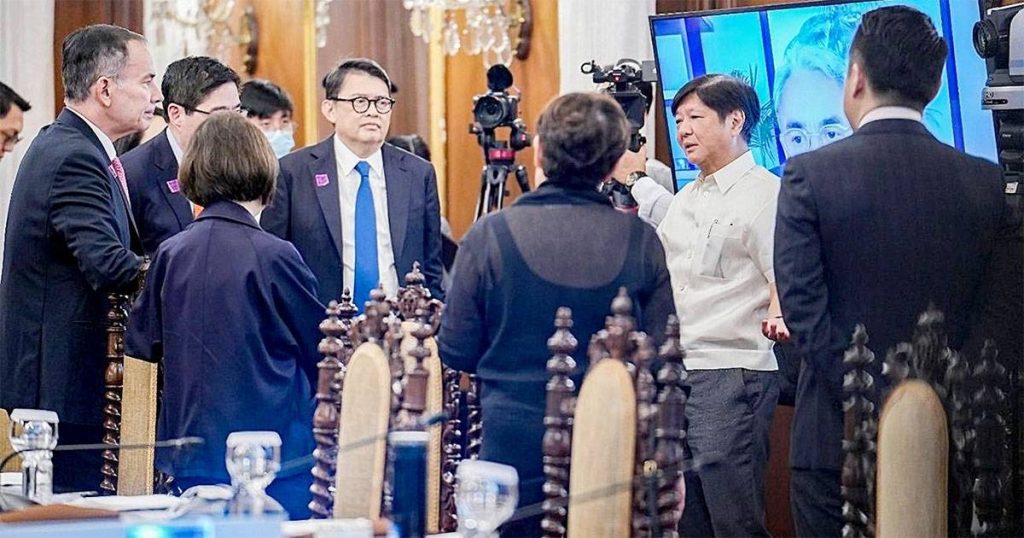
Concepcion: Ph Entering A ‘Phase Of Acceptance’ In Pandemic
September 22, 2022
Concepcion: Private Sector Helped Pitch Investments During Marcos Visit
September 27, 2022
Finding the Balance in Work, Life and the Economy
I am currently here in the US as part of the private sector delegation of President Marcos Jr.’s working visit. A few days ago, US President Joe Biden made the bold declaration that the pandemic, in the US at least, is over.
I suppose it was a pronouncement that people here in the US needed to hear despite months of already carrying on with their lives even with COVID still around. A few days earlier, the World Health Organization said that we may be nearing the end of the pandemic. Not a few days before, the Philippines relaxed its outdoor masking rules. The need to get back to normal is building up.
We’re seeing this in the increasing clamor among business owners for employees to return to the office. Understandably, there is some pushback. Flexible work arrangements became a necessity during the pandemic, and many office-bound workers discovered that it is possible to continue work from anywhere, given a reliable internet connection.
The leading reason cited by employees as a benefit of working from home is their being spared the struggles of commuting to and from work. However, the travails of the Filipino worker’s daily commute, especially in the NCR, are symptomatic of our general problem with transportation; it affects not just employees commuting to work but also other issues such as the transport of goods. The hesitation to return to office work makes it more urgent for the government to fix the public transport problem, especially in the NCR. Our return to normal hinges on having a reliable, affordable and convenient way for people to get to and from work.
I say this because many MSMEs depend on the spending generated by employees. Cafeteria operators, public transport drivers, the small kiosks at transport hubs, they all depend on office workers coming back to the office.
It’s good that Department of Labor and Employment Secretary Benny Laguesma has reviewed the telecommuting law to become more in keeping with the times. DOLE has helped give clarity to the issue by laying down the definitions and administrative rules for the terminologies and possible conditions of telecommuting or alternative workplace.
My position here is, let the business owners decide. They would know best which jobs require on-site work and which do not. For the IT-BPO sector, the Jobs Committee of the Private Sector Advisory Council has recommended a 70:30 in person-remote working arrangement. For the different industries and sectors, we must let them decide what is best for them. There might actually be business owners who favor remote working and welcome the reduction in overhead costs. But a decision has to be made by the business owners themselves if they need on-site working, and a similar decision can be made by employees if they wish to work for a company that requires them to return to pre-pandemic work hours.
It’s a complicated issue where one size does not fit all. Even manufacturing companies, for example, have employees whose tasks can be performed away from the physical confines of the office. Applicability depends on the business requirements, which are usually also based on delivery of commitments to customers. The company head will drive the decision. Businesses must be free to decide based on what their operations require.
I understand that for employers and managers from the old school, it requires some degree of trust to believe that employees do actual work when they say they do. During the pandemic, many managers have found ways to monitor performance of remote-working employees, while some have shifted their focus toward getting results rather than poring over time card reports.
Employees must return that trust and know that they, too, must give something. There are employers out there who know how to look after their employees. We saw them among the companies who signed up for our A Dose of Hope initiative when they procured COVID vaccines for their staff and their families.
At the same time there must be a balance in how we treat human capital. Belittling its value has cost many companies their experienced employees who exercised their option to either become self-employed or find employers that allow flexible working arrangements. Smart business owners will work hard to spare themselves the disruption, but they must be the ones to decide how best to handle this situation.
There is some merit to the thinking that we cannot build teams without personal interaction. Something is lost when workmates don’t get to interact outside of their official roles. I believe social interaction is important in personal development, but I leave that to the professionals to discuss in depth.
In the meantime, we must maintain the industrial peace we have right now while responding to people’s need to balance work and life. But the bigger picture is this: we need more mobility if we want the economy to grow and for businesses to remain viable so they can generate more employment.
We live and let live. Take and give in equal measure. This is how we move forward together.

2/F RFM Corporate Center, Pioneer cor. Sheridan Sts. Mandaluyong City, Metro Manila, Philippines

